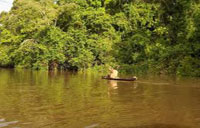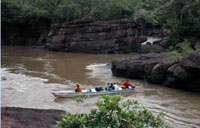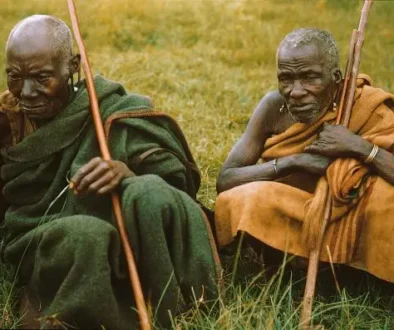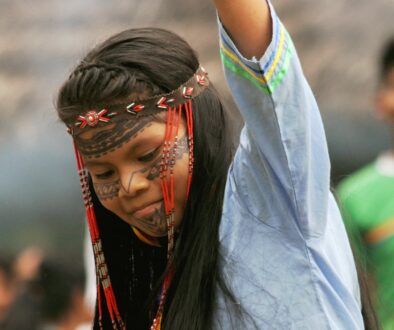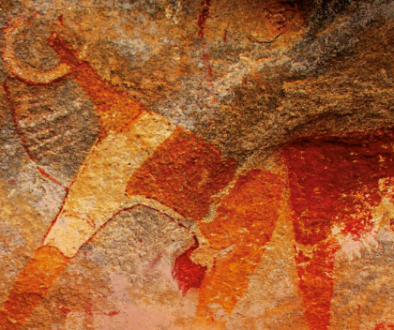A large National Park promoted by traditional indigenous authorities in Colombia
Yaigojé Apaporis, Colombia26 October 2009
On 26 October 2009 the Ministry of the Environment, Housing and Territorial Development declared Yaigojé Apaprois, an area of 1,060,603 ha, a National Natural Park. This Park is now the third largest in Colombia.
For the first time in Latin America traditional indigenous authorities, grouped together in the Yaigojé Apaporis Association of Indigenous Leaders, petitioned for an area of Resguardo (that is, an area belonging to the indigenous people) to be officially declared a national natural park. The aim behind this petition was to strengthen protection and conservation mechanisms in the area and the recognition of the tangible and intangible cultural values of the indigenous people in light of the threats from mining activities. This area consists of a nucleus of areas traditionally exploited by the Macuna, Tanimuca, Letuama, Cabiyari, Barazano, Yujup Macu and Yauna indigenous peoples; the name ‘Yaigojé Apaporis’ means ‘Tiger’s Backwater, a spiritual being and bearer of great wisdom.
The new Park boasts a very rich flora and fauna, being home to 1,683 vascular plants (33 of which are endemic to Colombia), 362 birds, 81 reptiles, 73 amphibians, 201 fish, 443 butterflies, 16 species of threatened mammals including giant ant-eater, Colombian red howler, night monkeys, black-headed uakari, titi monkeys, capuchin monkeys, woolly monkey, squirrel monkey, giant otter, oncilla, jaguar, puma, Amazon river dolphin, manatee and tapir).
The new National Park also has a wealth of cultural and spiritual traditions that provide local inhabitants with the knowledge they need to live in and protect this territory. Numerous hills, torrents, backwaters, lakes, cliffs, rivers, caves, salt-pans, stones, savannas and springs are regarded as Sacred Sites by local people and are used to preserve and care for the world via shamanic practices belonging to the “Thinking Way” that have been in use in this region for time immemorial. All this traditional knowledge is applied in hunting, fishing, gathering and horticulture regulated by the shamans, and the declaration of the park thus represents a perfect opportunity for preserving this traditional way of life as part of a new Protected Area.>>
For more information: Ministry of the Environment, Housing and Territorial Development


